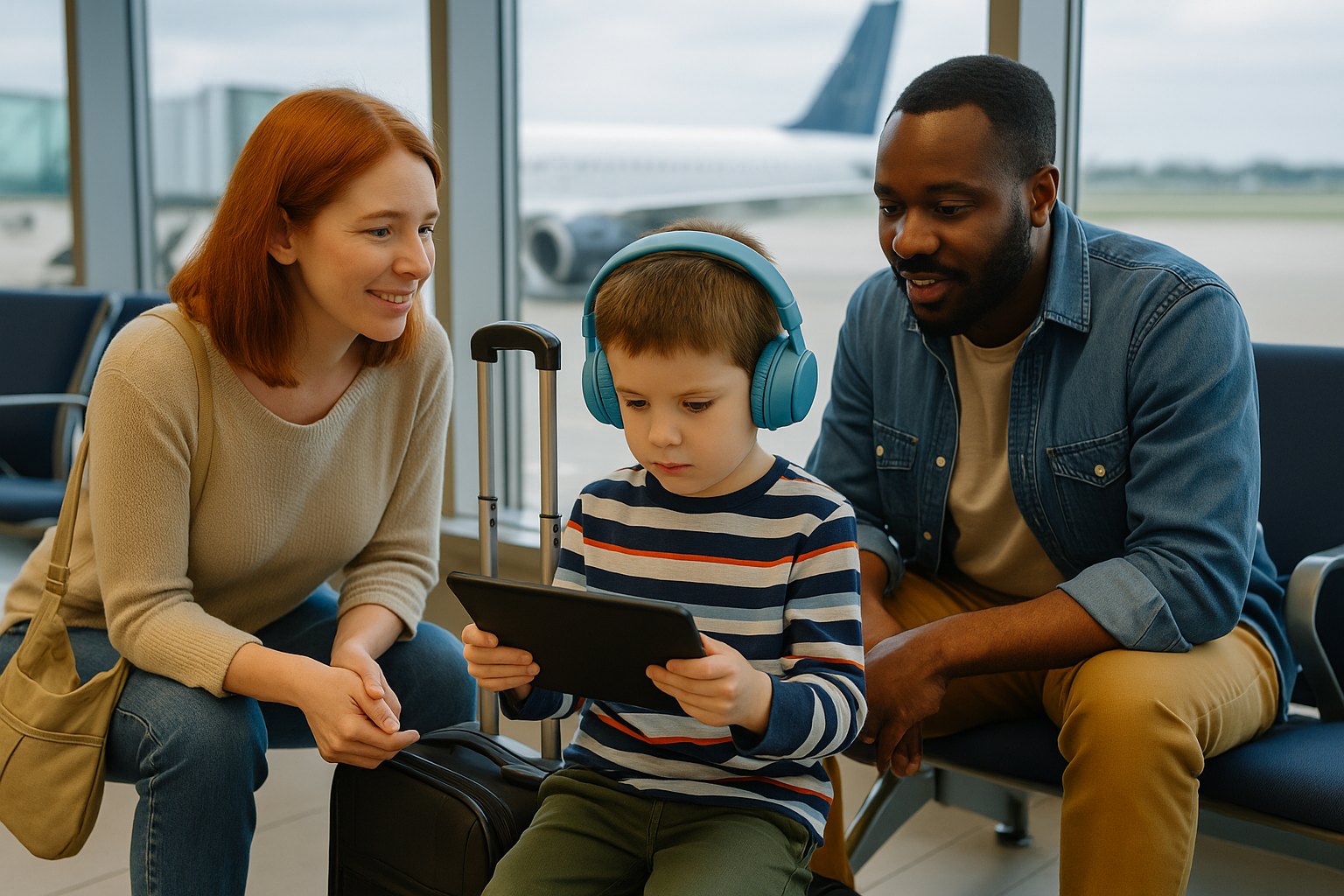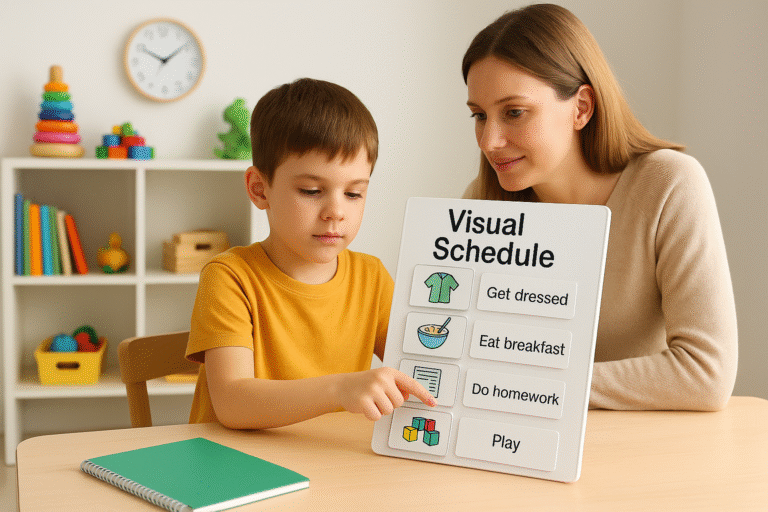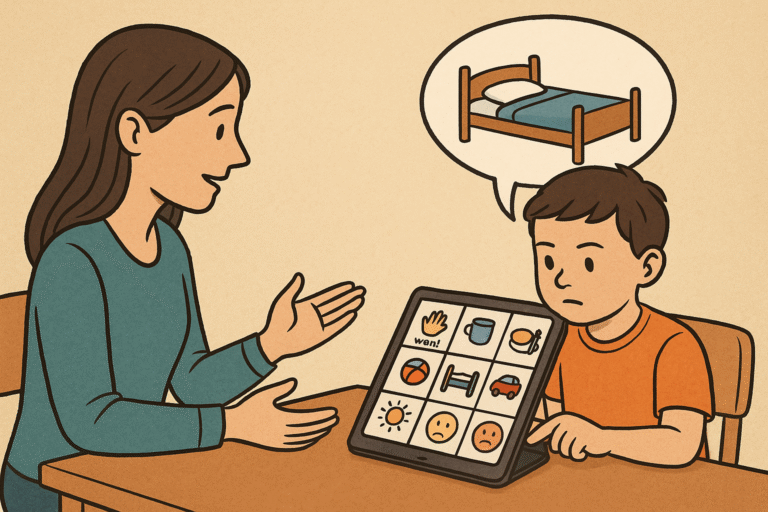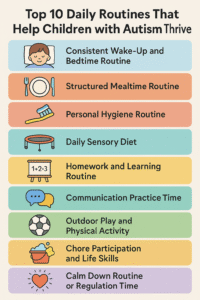Travel Tips for Families with Autistic Children begin with one core idea: preparation is everything. While family vacations offer new experiences and memories, they can also bring anxiety and sensory overload for children on the autism spectrum. With proper planning and patience, travel can become a rewarding adventure for everyone involved.
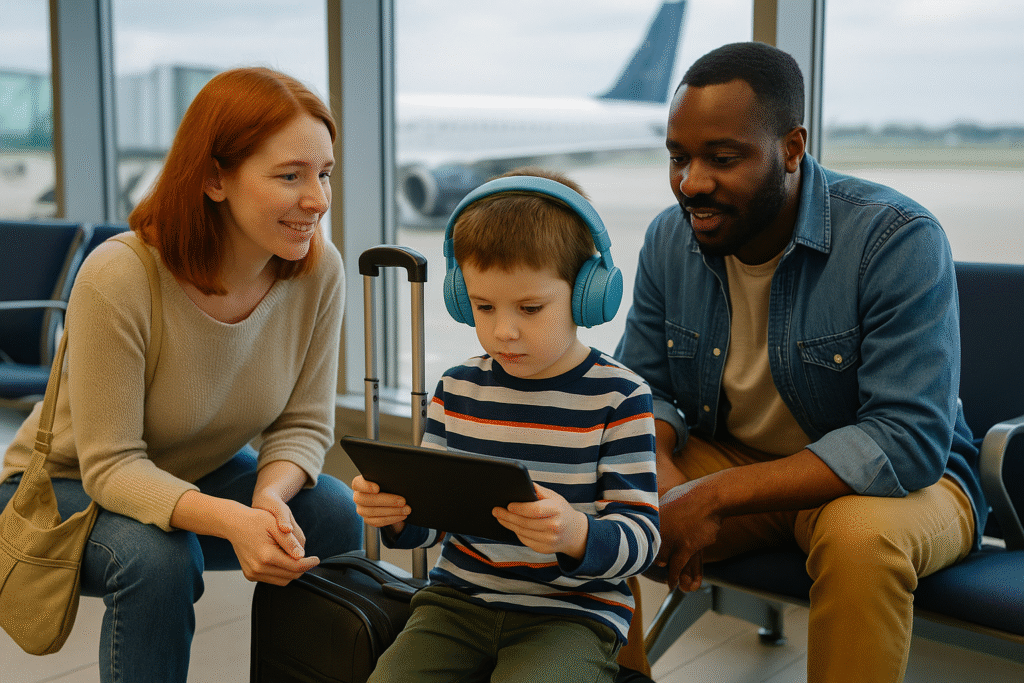
This guide offers realistic, compassionate, and proven strategies that help parents create positive travel experiences. Whether you’re traveling by plane, train, or car, these tips will help you reduce meltdowns, ease transitions, and enjoy the journey with your child.
🧠 Understand Your Child’s Triggers Before You Travel
One of the most important travel tips for families with autistic children is to identify potential sensory triggers beforehand. Loud noises, bright lights, long lines, or unfamiliar routines can cause discomfort or anxiety.
- Start by noting your child’s common sensory sensitivities (e.g., sound, touch, smells).
- Consider environments such as airports, restaurants, or theme parks that may overload their senses.
- Use this information to plan around potential challenges or create calming strategies.
👉 Autism Speaks provides downloadable travel toolkits tailored for autism-related needs.
✈️ Choose Autism-Friendly Airlines and Accommodations
Several airlines and hotels now offer autism-friendly services. These include priority boarding, early check-in, sensory kits, and trained staff.
Look for:
- “Wings for Autism” airport rehearsals or mock flights (available in some regions).
- Hotels with quiet zones or suites away from elevators.
- Chains like Hilton and Marriott offering autism awareness-trained staff.
💡 Pro Tip: Call ahead to confirm accessibility features and let providers know about your child’s needs.
🧳 Pack Smart: Comfort Items Are a Must
Packing for a child with autism should go beyond the basics. Bring familiar and soothing items that provide sensory regulation or emotional security.
Include:
- Noise-canceling headphones
- Weighted blankets or lap pads
- Fidget toys, chewables, or stress balls
- A fully charged tablet with preferred videos, apps, or games
- Snacks in familiar packaging to reduce food anxiety
Create a “travel comfort bag” to keep under your seat or within reach at all times.
🗺️ Prepare With Visual Supports and Social Stories
Visual schedules and social stories are powerful tools that help autistic children anticipate what will happen during the trip. These visuals reduce anxiety by breaking down unfamiliar activities into clear, manageable steps.
Create:
- A picture-based itinerary (using icons or real photos)
- A story that explains airport security, hotel check-in, or road trip stops
- Printable visuals for transitions like boarding, eating out, or going to the pool
You can find free templates and tools on websites like Do2Learn and Boardmaker.
🚗 Road Trip Tips for Families with Autistic Children
Driving offers flexibility but can still present challenges for autistic children who struggle with long periods of confinement or boredom.
Helpful tips:
- Plan for frequent breaks at sensory-friendly rest stops or open parks
- Use window shades and neck pillows for comfort
- Keep a routine with meals, rest, and activity times as consistent as possible
- Include calming music or audiobooks tailored to your child’s preferences
Don’t forget to plan for unexpected delays—an emergency sensory kit can be a lifesaver.
🚨 Have a Safety Plan in Place
Safety is a top concern, especially if your child is prone to wandering or meltdowns in public. These travel tips for families with autistic children focus on proactive safety measures:
- Use medical ID bracelets or GPS trackers (e.g., AngelSense or Jiobit)
- Take a photo of your child each day in their outfit for easier identification
- Teach your child to approach specific helpers (police, staff with badges)
- Carry laminated cards explaining your child’s diagnosis and needs
Internal link: Read more on Stimming: Why It Happens and Why It Matters in Autism

🍽️ Eating Out and Managing Meals
Many children with autism are picky eaters or have strict food preferences. Trying new foods can feel overwhelming in unfamiliar places.
Plan ahead by:
- Bringing safe snacks or meals when possible
- Researching menus of restaurants ahead of time
- Asking for quiet seating or early dining hours
- Using visual menus or apps like Autiplan for meal planning
Some parents also bring small utensils or special cups from home to reduce stress during mealtimes.
🧩 Practice the Trip Ahead of Time
A top strategy in the list of travel tips for families with autistic children is practice. This can be done in fun, low-pressure ways.
Try:
- Doing “practice suitcases” and packing runs
- Visiting the airport or bus terminal beforehand
- Pretending to go through security at home using play-based learning
- Driving to a local hotel for a one-night stay to simulate the experience
The more familiar the process becomes, the smoother it is on the actual travel day.
❤️ Advocate and Be Patient With Yourself
As a parent, you are your child’s best advocate. Don’t hesitate to speak up for accommodations, modify plans on the go, or cancel activities if needed.
And most importantly: be kind to yourself.
Things won’t always go as planned—and that’s okay. Celebrate the small wins, laugh through the chaos, and remember that each experience helps you build a travel toolkit that works uniquely for your family.
🔚 Final Words: Travel Tips for Families with Autistic Children
Travel tips for families with autistic children are not one-size-fits-all. But with thoughtful planning, sensory considerations, visual supports, and backup plans, your trip can go from stressful to successful.
Whether it’s your first journey or your fiftieth, every travel day offers growth, resilience, and beautiful moments waiting to happen.
